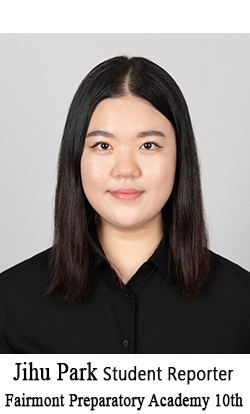 |
When you visit Jeju, also known as the “Hawaii of South Korea.” Your tour guide tells you that a mysterious group of women divers who call themselves “Haenyeo” sell Jeju’s best seafood. You visit the local market and encounter one of these elderly women selling abalone. The handwritten label in front of the mollusks reads “92,000 KRW per kg,” approximately 90 USD. You try to haggle down the price, but the old lady aggressively shouts at you in a harsh dialect, and the tour guide seems reluctant to translate as he laughs nervously.
Living in Jeju, I have witnessed many tourists being berated by these women charging seemingly high prices for their seafood. Although most people see them as mere fisherwomen, Haenyeo has defined a cultural practice that empowers women, cultivated methods of ecological sustainability, and even helped fight Japanese occupation as they put down their rubber suits and goggles, taking up arms in local militias.
Without any devices other than their traditional tools, the Haenyeo dive for all kinds of seafood and must intuitively know when to resurface for more air. Even for experienced Haenyeo, it is not easy to resist temptation when they see giant abalones within reach. However, they know greed can prove fatal.
 |
| Reference: https://www.lottehotelmagazine.com/ko/art_culture_detail?no=198 |
Due to the dangers and intense labor of this lifestyle, fewer and fewer women are preserving this way of life. In the 1960s, there were 26,000 Haenyeo in and around Jeju. This number has dwindled to 4,500, most of whom are over sixty years old (NYT). This traditional form of jobs coexisting with nature is expected to change considerably - the Haenyeo cultural heritage is on the verge of natural extinction. To maintain the status of women within the community, the culture of Haenyeo was inscribed among the UNESCO Intangible Cultural Heritage Lists in 2016 (UNESCO).
The Haenyeo culture is still striving to survive despite these attempts. Education and numerous local festivals have brought this living heritage to the attention of the public, and it should be further sponsored and expanded.
Efforts to keep these cultural traditions alive can also benefit the environment. Because they consider the maturation of the seafood harvested, the condition of the coral reef, the ideal areas for collecting and being left alone, and more, the Haenyeo diving method is particularly environmentally friendly.
If you are ever in Jeju and come across these brusque women, you should remember that they are more than just aggressive old ladies with strong dialects, and considering the contributions you can make to preserving this important cultural heritage, the 92,000 KRW price tag for their freshly caught abalone is more than worth it.
Works Cited -
DenHoed, Andrea. “The Sea Women of South Korea.” The New Yorker, The New Yorker, 19 June 2017, www.newyorker.com/culture/photo-booth/sea-women-of-south-korea.
“The Haenyeo: Living Legends of Jeju Island.” UNESCO, 8 Oct. 2019, en.unesco.org/courier/april-june-2017/haenyeo-living-legends-jeju-island.
Sang-hun, Choe. “Hardy Divers in Korea Strait, 'Sea Women' Are Dwindling.” The New York Times, The New York Times, 29 Mar. 2014, www.nytimes.com/2014/03/30/world/asia/hardy-divers-in-korea-strait-sea-women-are-dwindling.html.
박지후 강남포스트 학생기자 webmaster@ignnews.kr
<저작권자 © 강남포스트, 무단 전재 및 재배포 금지>

 강남구, 반려견 순회 놀이터 운영
강남구, 반려견 순회 놀이터 운영


